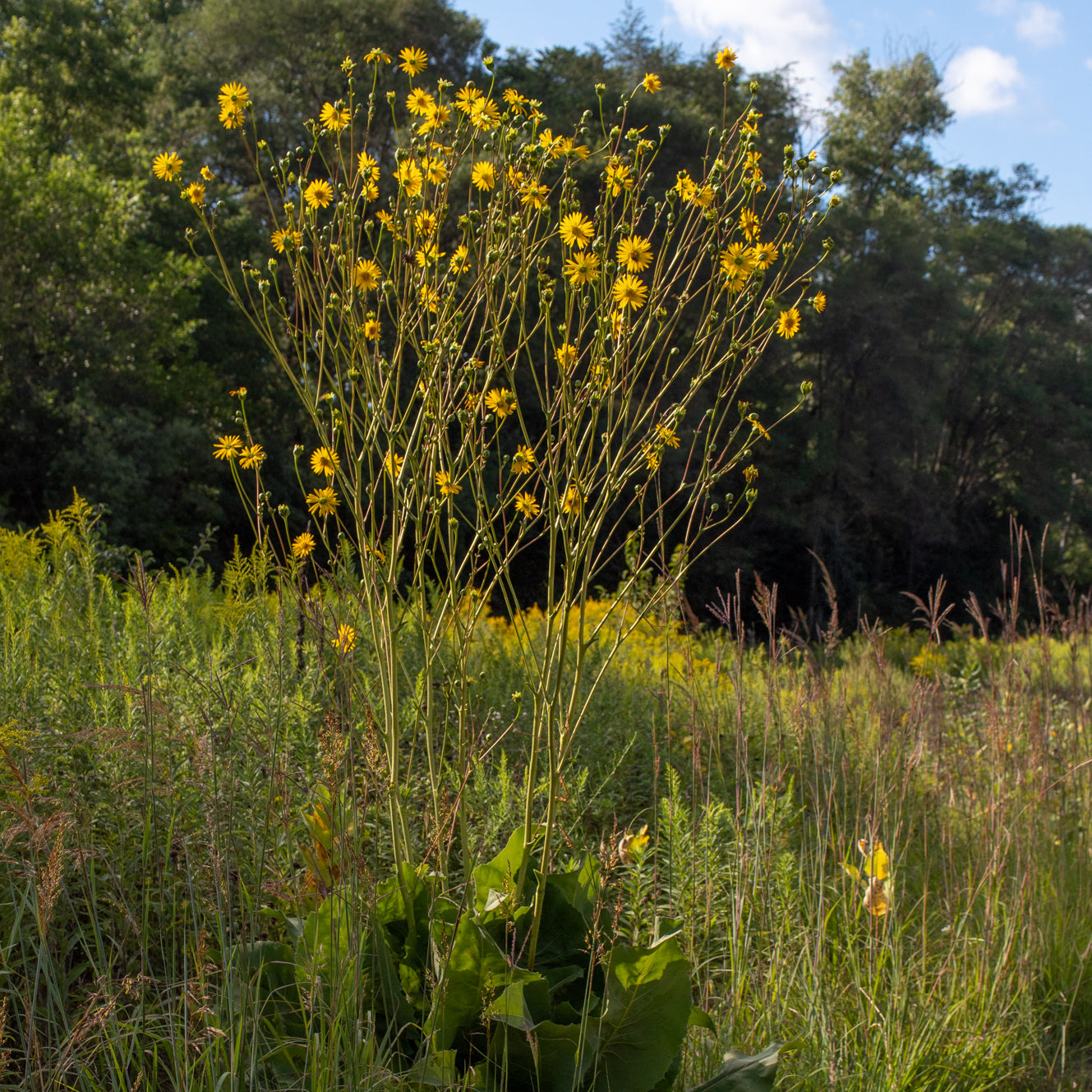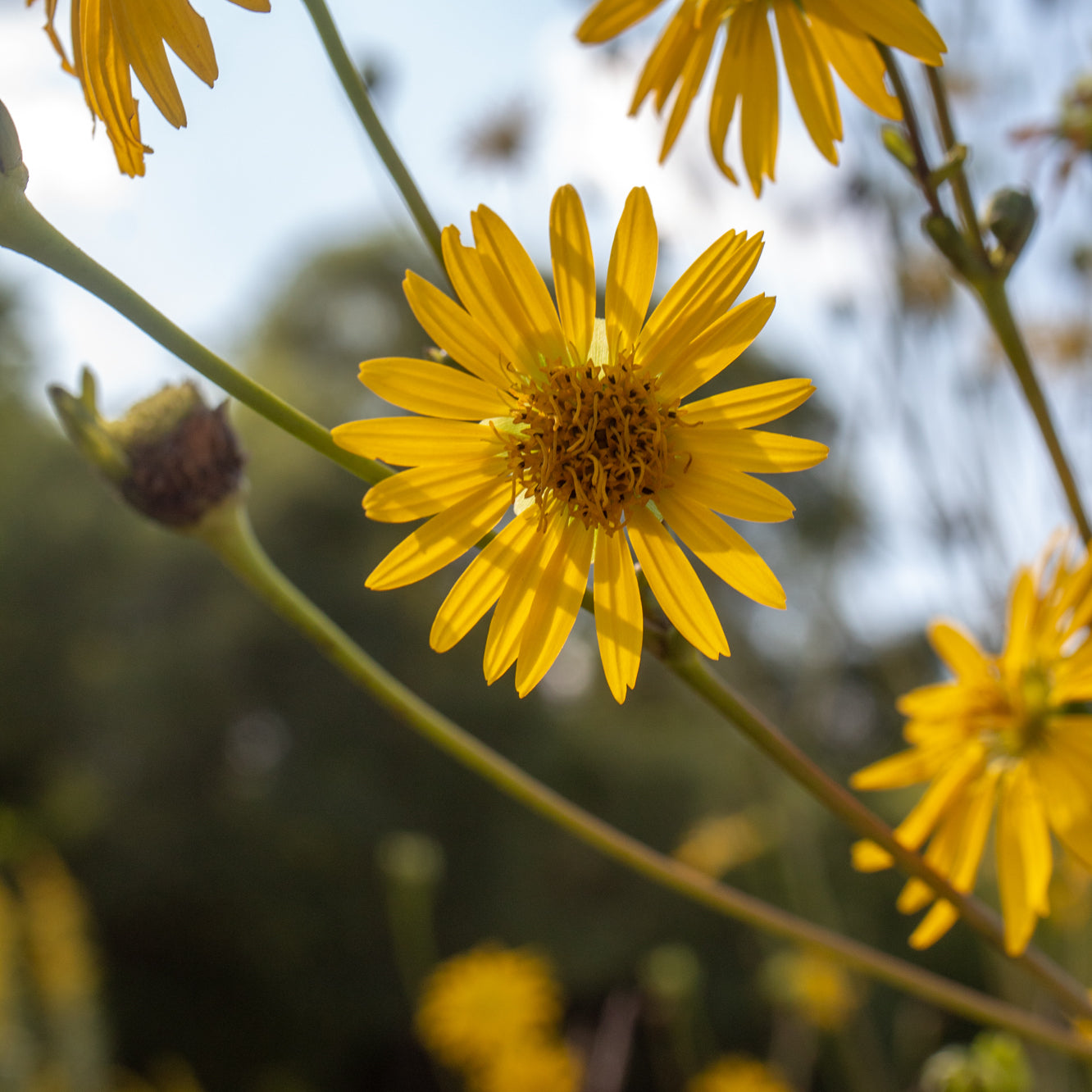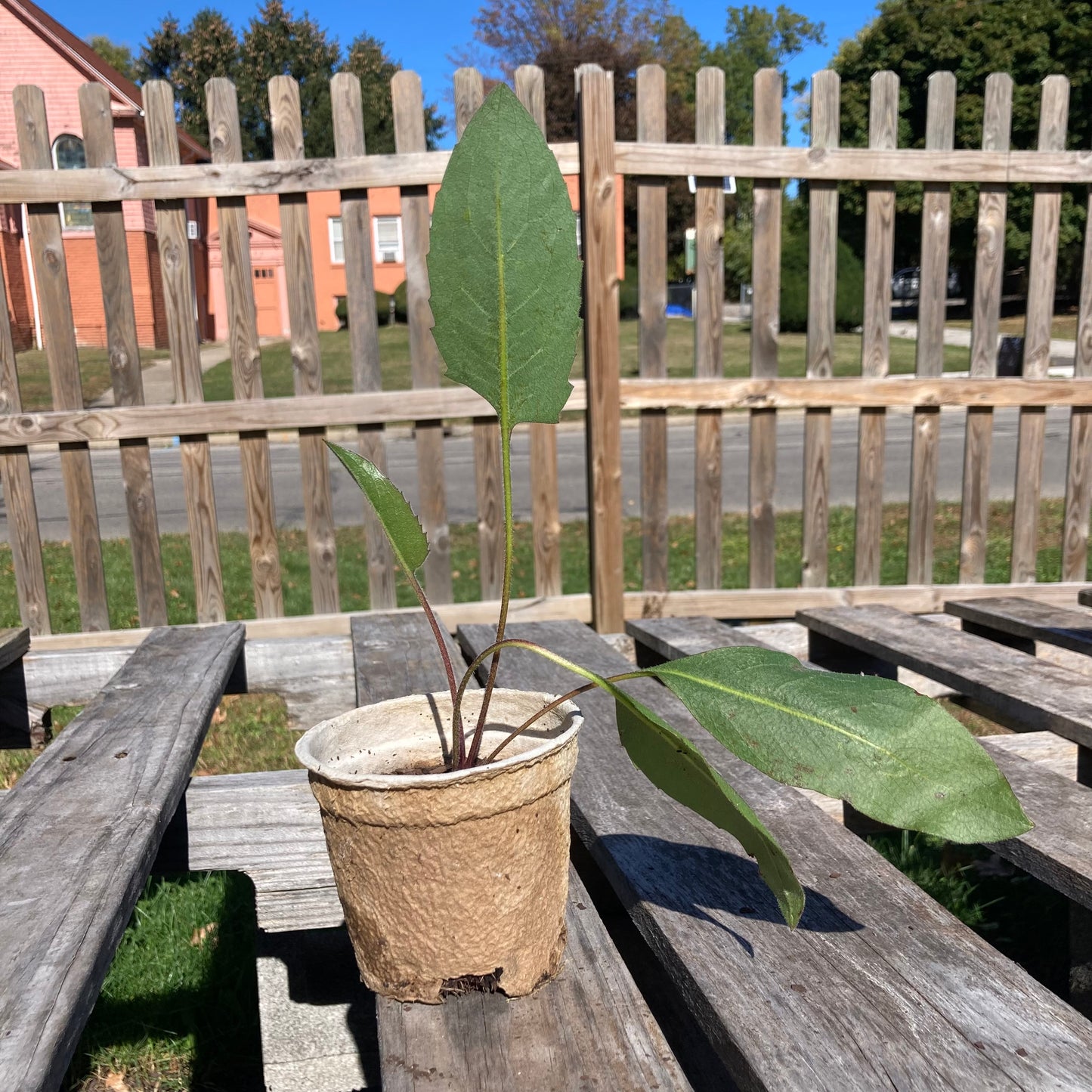Prairie dock
Silphium terebinthinaceum
Silphium terebinthinaceum
9 remaining
Couldn't load pickup availability
Sun/shade: Full sun
Soil moisture: Dry to wet soil
Height: 5-8'
Flowering period: August
Deer resistance: Medium
From a distance, it appears as though prairie dock's big yellow blooms are suspended in mid-air. Sleek, almost leafless stems fade from notice among the sunburst blossoms. At the base of the plant, huge, spade-shaped leaves stand upright and face the sun, maximizing light absorption.
Native to fields and remnant prairies, prairie dock prefers full sun but tolerates a wide range of moisture, ranging from consistently moist to moderately dry. The plant forms a taproot that can extend to a depth of 12’ and leads to very good drought tolerance, once established. Prairie dock may take several years to begin flowering and it is not an aggressive spreader.
By itself, prairie dock provides season-long interest, from the emergence of its giant leaves in spring to the blooming of its big yellow flowers in late summer. The plant makes a perfect stand-alone specimen, and when used as a border, it can turn a simple path into a regal walkway. In a mixed garden, an area devoted to several prairie docks will help ensure that the plant’s leaves don’t get obscured by neighboring vegetation. Pairing with bonesets and ironweed sets the stage for a colorful late season show.
Due to their impressive height (up to 10’), the plant’s stems sometimes have a tendency to lean, especially in windy areas. This can be remedied by cutting the stems down to the base of the plant in early July, when they are about 2-3 feet tall. The stems will then regrow to a height of approximately 4 feet and will be resistant to leaning and getting blown over. Plants treated in this manner will then bloom at the usual time for this species, i.e., late August.
Photos by Ashley Keesling.





